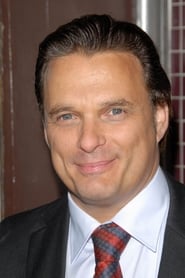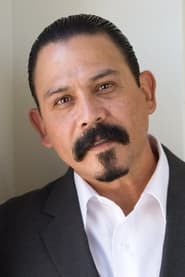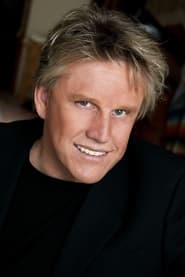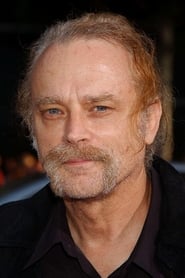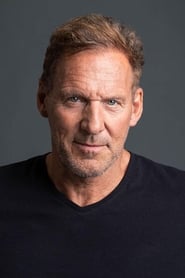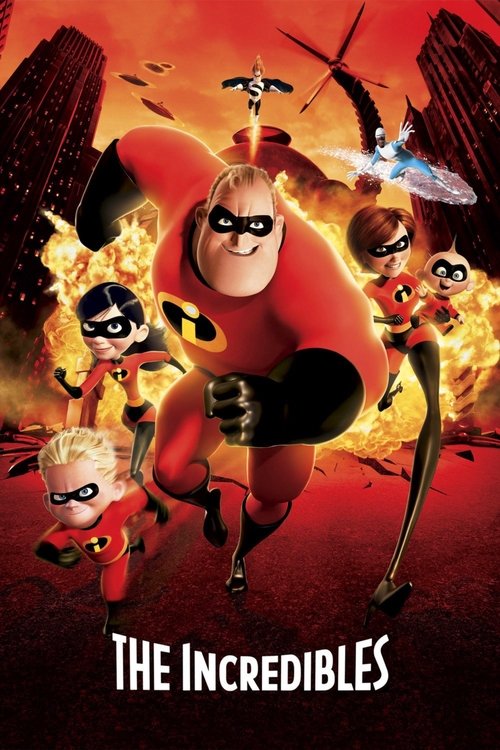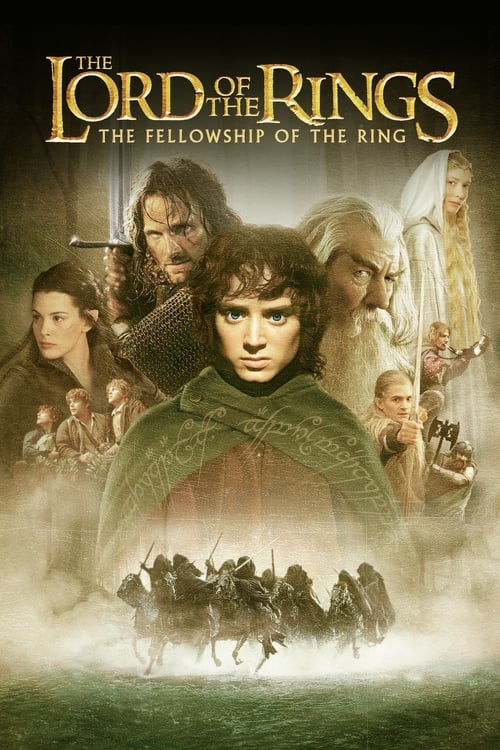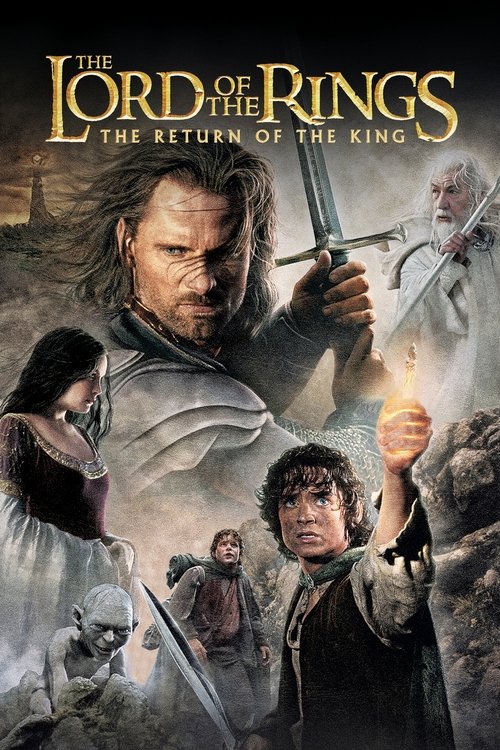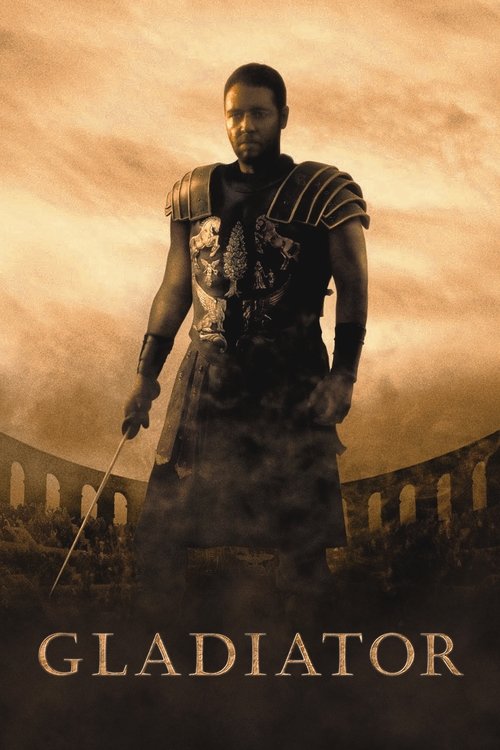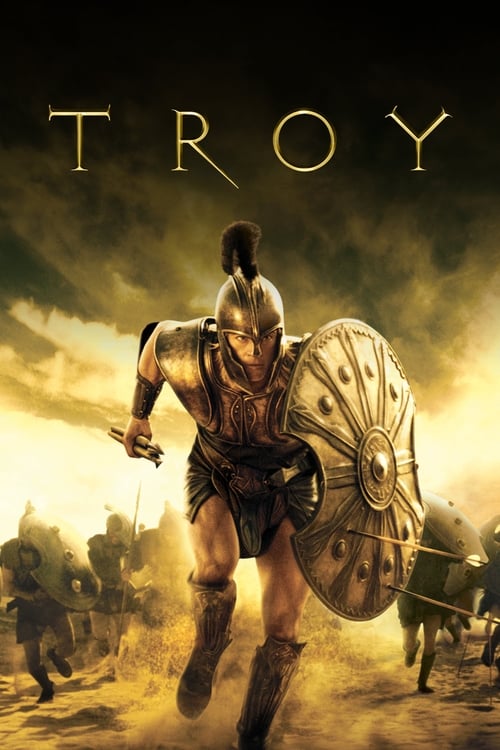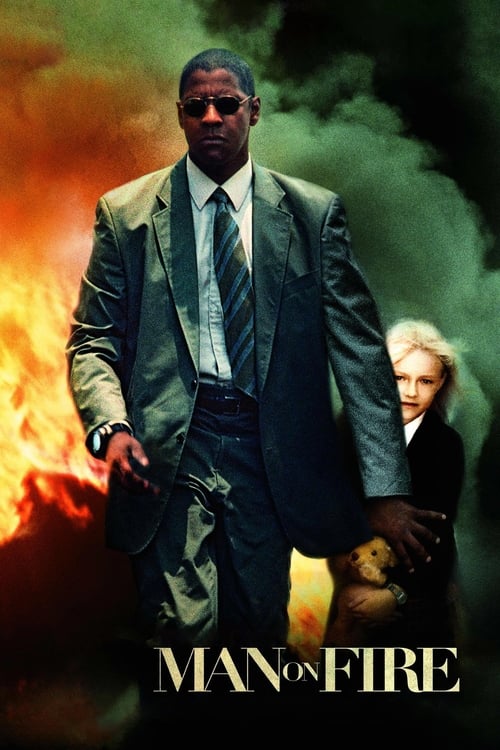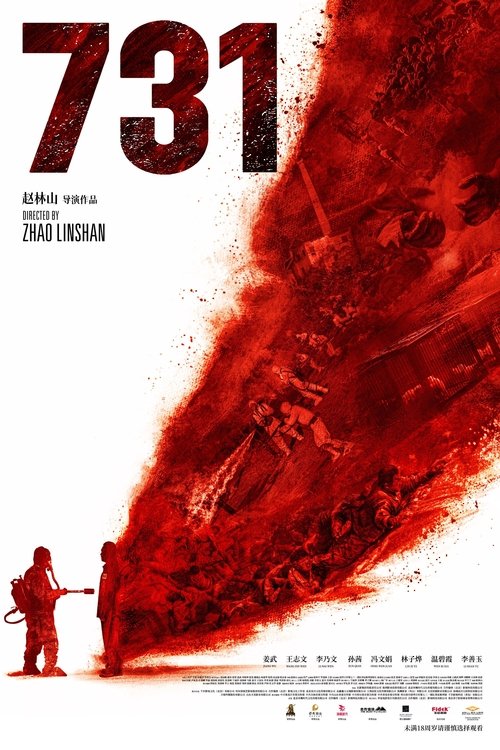
Ask Your Own Question
What is the plot?
El Padrino: The Latin Godfather - Complete Plot Narrative
The story begins in 1964 in the San Francisco Valley area of East Los Angeles, where we are introduced to the Vasquez family. Manny Vasquez is a formidable and successful drug dealer who has built an empire on the streets, living an extravagant lifestyle that commands respect and admiration from those around him. His young son, Kilo, watches his father with wide eyes, fascinated by the power, the money, and the respect that comes with Manny's position in the underworld. Manny takes his son cruising through the streets in lowriders, the vehicles themselves becoming symbols of their status and dominance in the neighborhood. The boy absorbs everything--the way his father moves through the world with confidence, the way people defer to him, the way money flows like water through his hands. Kilo's mother desperately tries to keep her son away from this life, recognizing the danger and moral corruption that surrounds Manny's activities, but her efforts are largely futile as Kilo becomes increasingly drawn to his father's world.
As a young boy, Kilo participates directly in his father's illegal activities, learning the trade from the ground up. He sees firsthand how the drug business operates, how connections are made, how territory is controlled. The streets of East Los Angeles become his classroom, and the drug trade becomes his curriculum. But this education is interrupted when Manny is arrested. The authorities finally catch up with him, and Manny is taken away, leaving his son in the care of his mother. Young Kilo must now navigate a world without his father's protection and guidance, though the seeds of ambition have already been planted deep within him.
Years pass, and Kilo grows into a young man shaped entirely by his childhood experiences. The memory of his father's power, the lifestyle, the respect--all of it burns inside him. He resolves to follow in Manny's footsteps and build his own empire. Starting small, Kilo discovers that the drug business is remarkably profitable. He begins dealing drugs to high school and college students, targeting young people who are eager to experiment and have money to spend. His operation grows quickly because he understands the market, understands the streets, and understands the psychology of power that his father taught him.
As his business expands, Kilo forms a gang around himself, recruiting loyal soldiers who will do his bidding. Among his closest associates are two men named Loco and Rudy, who become his most trusted friends and partners in crime. These men are willing to follow Kilo into any situation, any confrontation, any danger. They are his inner circle, his brothers in the drug trade.
Kilo also forms a crucial business relationship with a woman named Sabeva, a prostitute with extensive connections throughout the criminal underworld. Sabeva has access to networks that Kilo needs--she knows people, she can facilitate introductions, she can open doors that would otherwise remain closed. Together, they work to expand Kilo's operation, and Sabeva's connections prove invaluable as Kilo's power grows exponentially. He becomes a powerful drug lord, controlling significant territory in East Los Angeles and building a reputation as someone not to be crossed.
During this rise to power, Kilo meets a woman named Christina, and they begin a romantic relationship. Christina becomes pregnant with Kilo's child, and for a moment, it seems as though Kilo might have something beyond the drug trade--a family, a legacy beyond crime. But this personal happiness is short-lived. Kilo is arrested, and the circumstances of his arrest suggest that he has been framed. The charges are serious, and the evidence against him appears damning. Loco and Rudy are arrested alongside him, suggesting that they were all caught in the same net or that they were deliberately targeted together.
Kilo, Loco, and Rudy are sentenced to prison, their freedom stripped away just as Kilo's power was reaching its zenith. The three men find themselves behind bars, their empire temporarily halted, their operations frozen. But fate, in the form of political corruption, intervenes.
In the outside world, a tragedy has occurred. Molly Lancaster, the daughter of Governor Lancaster, a powerful political figure, is found dead in a van. Her death is shocking and devastating to the Governor, but it also creates a problem for him. The investigation into her death leads authorities to a serial killer named Lars Vincent Truman, a man with a long history of violent crimes. Truman is convicted and sentenced to life imprisonment, and he ends up in the same prison where Kilo, Loco, and Rudy are being held.
Governor Lancaster, desperate to avenge his daughter's death and perhaps to ensure that Truman never has the opportunity to harm anyone else, makes a calculated decision. He approaches Kilo and his men with a proposition--a deal that will change everything. The Governor offers them their freedom, their release from prison, if they will kill Lars Vincent Truman while he is incarcerated. It is a dark bargain, a Faustian exchange where the Governor uses criminals to do his bidding, to execute his personal vendetta against the man he believes murdered his daughter.
Kilo, Loco, and Rudy accept the deal. They have little choice, really--prison is a living death, and the promise of freedom is intoxicating. They carry out the Governor's wishes, and Lars Vincent Truman dies at their hands inside the prison walls. The serial killer is eliminated, and the three men are released, their debt to the Governor paid in blood.
But Kilo's release from prison does not mark the end of his troubles--it marks the beginning of a far more dangerous phase of his life. Free from incarceration, Kilo rebuilds his operation with even greater intensity and ambition. He becomes more powerful than before, his reputation enhanced by his time in prison and his survival of that brutal environment. His drug empire expands, his wealth accumulates, and his influence spreads throughout East Los Angeles and beyond. He is no longer just a drug dealer; he is a drug lord, a kingpin, a man of significant power and resources.
But this power makes him a threat to the political establishment. Governor Lancaster and Attorney General Navarro, watching Kilo's rise with growing concern, realize that they have created a monster. The man they freed to do their bidding has become too powerful, too dangerous, too much of a liability. They cannot allow him to continue unchecked. A decision is made at the highest levels of government: Kilo must be eliminated.
What follows is a series of violent confrontations as the full power of the state is brought to bear against Kilo. The Governor and the Attorney General orchestrate a campaign to destroy him, using law enforcement, political pressure, and whatever other tools are at their disposal. Kilo fights back with the resources of his criminal empire, but he is now facing an enemy far more formidable than rival drug dealers or street gangs. He is facing the government itself, an institution with unlimited resources and the legal authority to pursue him without mercy.
The confrontations are brutal and tragic. People die--some of them Kilo's associates, some of them law enforcement officers, some of them innocent bystanders caught in the crossfire. The violence escalates as both sides commit fully to the conflict. Kilo uses his gang, his money, and his connections to resist, but the machinery of government is relentless. Attorney General Navarro personally oversees the campaign against him, ensuring that every legal and extralegal tool is deployed.
The film reaches its climax as these forces collide in a series of violent encounters. The exact details of each confrontation blur together in a haze of gunfire, betrayal, and death. Kilo's world, built on the foundation of his father's legacy and his own ambition, begins to crumble. The people closest to him--Loco, Rudy, Sabeva, and others--face the consequences of their association with him. Some die in the violence; others are arrested or forced to flee.
Christina, Kilo's pregnant girlfriend, is caught in the middle of this chaos. She has tried to stay away from Kilo's criminal activities, to maintain some semblance of a normal life, but the violence of his world reaches her anyway. The child she carries becomes a symbol of what Kilo might have had if he had chosen a different path, but it is too late for such considerations now.
As the violence reaches its crescendo, Kilo realizes the full extent of his predicament. He is trapped between the criminal underworld that made him and the government that now seeks to destroy him. The deal he made with Governor Lancaster--killing Lars Vincent Truman in exchange for freedom--has come back to haunt him. The Governor and Attorney General have decided that Kilo is a loose end that must be tied up, a problem that must be solved through violence and death.
The final confrontations are devastating. Kilo fights with the desperation of a man who has everything to lose, but he is ultimately overwhelmed by the sheer force arrayed against him. The tragic consequences that the plot summary mentions are the deaths of people close to Kilo, the destruction of his empire, and the realization that his rise to power was always destined to end in tragedy.
The film concludes not with a clear resolution but with a sense of tragic inevitability. Kilo survives the immediate violence, but his world has been destroyed. His power is broken, his organization dismantled, his closest associates either dead or scattered. The government has achieved its objective of eliminating the threat he posed, though at great cost in terms of violence and death.
The final scenes show Kilo in the aftermath of the destruction, a man who rose from the streets to become a powerful drug lord, only to be brought down by the very political forces that once used him for their own purposes. He questions his own role in a culture where corruption rules the streets, where power is everything, and where loyalty means nothing when political interests are at stake. The film ends with the implication that Kilo's story is not unique--that the cycle of violence, corruption, and tragedy will continue in East Los Angeles, with new players rising and falling in an endless dance of ambition and destruction.
The narrative arc of El Padrino is ultimately a cautionary tale about the seductive nature of power, the corrupting influence of the drug trade, and the impossibility of escaping the consequences of one's choices. Kilo's journey from a curious child watching his father cruise the streets in a lowrider to a powerful drug lord to a broken man facing the full force of government retribution is a descent into darkness from which there is no redemption. The film suggests that in a world where corruption is endemic, where the line between criminals and politicians is blurred, and where violence is the primary currency of power, there are no winners--only varying degrees of losers.
More Movies Like This
Browse All Movies →
What is the ending?
In the ending of "El padrino: The Latin Godfather," the story culminates in a violent confrontation between rival factions, leading to significant losses for the main characters. The protagonist, Miguel, faces betrayal and must navigate the treacherous waters of loyalty and revenge. Ultimately, he emerges as the new leader, but at a great personal cost, as he loses loved ones and is left to grapple with the weight of his decisions.
As the final act unfolds, the tension escalates. Miguel, having taken over the family business, is confronted by rival gang members who threaten his power. The scene opens in a dimly lit warehouse, where Miguel meets with his closest allies, including his loyal friend Carlos. The atmosphere is thick with anticipation, as they discuss their next moves against the rival faction led by the ruthless Santos.
Suddenly, the meeting is interrupted by gunfire from outside. Miguel's men scramble for cover, and chaos ensues. The camera captures the frantic expressions of Miguel and Carlos as they duck behind crates, their hearts racing. Miguel's determination is palpable; he knows that this confrontation could determine the fate of his family and their legacy.
In the midst of the gunfight, Carlos is shot, and Miguel's face contorts with anguish as he watches his friend fall. This moment is pivotal, showcasing Miguel's internal struggle between his desire for power and the loyalty he feels towards those he loves. He rushes to Carlos's side, cradling him as he takes his last breaths, a moment filled with sorrow and regret.
As the dust settles, Miguel manages to rally his remaining men and confront Santos directly. The two engage in a tense standoff, exchanging heated words that reveal their deep-seated animosity. Miguel's resolve hardens; he knows that to secure his position, he must eliminate Santos once and for all. The confrontation escalates into a brutal fight, with both men showcasing their desperation and determination.
In a climactic moment, Miguel overpowers Santos, delivering a fatal blow. As Santos lies dying, he looks up at Miguel with a mix of fear and respect, acknowledging the new order that has been established. Miguel stands over him, breathing heavily, the weight of his actions settling in. He has won, but at what cost?
The final scenes depict Miguel returning to his home, where he is met with the somber faces of his family. The atmosphere is heavy with loss; the sacrifices made weigh heavily on him. He sits alone in a darkened room, reflecting on the bloodshed and the lives lost. The camera lingers on his face, capturing the conflict within him--he is now the leader, but he is also a man burdened by the consequences of his choices.
As the credits roll, the audience is left with a sense of the cyclical nature of power and violence, and the personal toll it takes on those who seek it. Miguel's journey has transformed him, and while he has achieved his goal, the emotional scars remain, hinting at the ongoing struggle between ambition and morality.
Is there a post-credit scene?
In "El Padrino: The Latin Godfather," there is no post-credit scene. The film concludes with a powerful final sequence that encapsulates the themes of loyalty, betrayal, and the weight of legacy within the world of organized crime. The story wraps up with the main characters facing the consequences of their choices, leaving the audience with a sense of closure regarding their arcs. The absence of a post-credit scene emphasizes the finality of the narrative and the enduring impact of the characters' decisions.
Who is the main character in El padrino: The Latin Godfather and what motivates him throughout the film?
The main character in El padrino: The Latin Godfather is Miguel, a powerful and ambitious drug lord. His motivations are deeply rooted in his desire for power and control over the drug trade, as well as a need to protect his family and legacy. Throughout the film, Miguel grapples with the consequences of his choices, torn between his ruthless business dealings and his love for his family.
What role does the character of Elena play in Miguel's life and how does she influence his decisions?
Elena is Miguel's wife and serves as a moral compass for him. She represents the life Miguel could have had away from the drug trade. Her emotional struggles and pleas for Miguel to leave the criminal world create tension in their relationship, influencing his decisions as he weighs his love for her against his ambition and the violent world he inhabits.
How does the character of Javier serve as an antagonist to Miguel, and what are his motivations?
Javier is a rival drug lord who seeks to undermine Miguel's power and expand his own territory. His motivations are driven by greed and a desire for dominance in the drug trade. Throughout the film, Javier's cunning and ruthless tactics create escalating conflict, pushing Miguel to make increasingly desperate choices to protect his empire.
What significant event leads to a turning point in Miguel's character arc?
A significant turning point in Miguel's character arc occurs when he is betrayed by a close associate, leading to a violent confrontation that results in the loss of a family member. This event forces Miguel to confront the harsh realities of his lifestyle, igniting a transformation in his character as he begins to question the path he has chosen and the impact it has on his family.
How does the theme of family loyalty manifest in the relationships between Miguel and his siblings?
Family loyalty is a central theme in the relationships between Miguel and his siblings, particularly with his brother, who is initially supportive but grows increasingly disillusioned with Miguel's choices. Their interactions are fraught with tension as they navigate the complexities of loyalty, betrayal, and the consequences of their family's criminal legacy, ultimately leading to a rift that tests their bonds.
Is this family friendly?
"El padrino: The Latin Godfather," produced in 2004, is not considered family-friendly. The film contains several potentially objectionable or upsetting scenes and aspects that may be inappropriate for children or sensitive viewers.
-
Violence: The film features graphic depictions of violence, including shootings and physical confrontations, which may be disturbing to some viewers.
-
Crime and Corruption: The narrative revolves around organized crime, showcasing illegal activities and the moral complexities associated with them, which may not be suitable for younger audiences.
-
Strong Language: The dialogue includes frequent use of profanity and harsh language, which could be offensive.
-
Adult Themes: The film explores themes of betrayal, loyalty, and power struggles within a crime family, which may be too mature for children.
-
Emotional Turmoil: Characters experience intense emotional conflicts, including betrayal and loss, which could be upsetting for sensitive viewers.
These elements contribute to a tone that is more appropriate for adult audiences.



